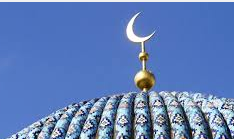In a first for Serbia, police on Wednesday arrested eight men accused of taking part in killing more than 1,000 Bosnian Muslims in the 1995 Srebrenica massacre, The Associated Press has learned.
The move could be a significant milestone toward healing the wounds of Europe’s worst slaughter of civilians since World War II.
Chief Serbian War Crimes Prosecutor Vladimir Vukcevic told the AP that all those arrested “are former members of a special brigade of the Bosnian Serb police.”
The massacre took place at a warehouse on the outskirts of Srebrenica, a team of Serbian and Bosnian prosecutors told the AP. Altogether, more than 8,000 Bosnian Muslim men and boys were killed in the eastern Bosnian enclave of Srebrenica by the Serbs in 1995 — the only atrocity in Europe to be labeled genocide by the United Nations since World War II.
Serbian prosecutors initially arrested seven suspects in pre-dawn raids Wednesday at different locations in Serbia, then caught the eighth suspect later in the day after a manhunt. The prosecutors said they are still searching for more suspects in Serbia and in neighboring countries.
The biggest arrest in the sweep was Nedeljko Milidragovic, the commander dubbed “Nedjo the Butcher,” who went on to become a successful businessman in Serbia, the AP has learned.
More than 100,000 people were killed and millions left homeless in Bosnia’s 1992-95 war when Bosnian Serbs, supported by neighboring Serbia, rebelled against Bosnia’s declaration of independence from Serb-led Yugoslavia.
Serbia in the past has put on trial men who took a group of prisoners away from Srebrenica to be killed. And in 2011 it arrested Ratko Mladic — the warlord who masterminded the slaughter — and sent him to an international criminal court in The Hague, Netherlands. But Wednesday’s arrests are Serbia’s first attempt to bring to justice men who got their hands bloody in the killing machine known as the Srebrenica massacre 20 years ago this July.
“It is important to stress that this is the first time that our prosecutor’s office is dealing with the mass killings of civilians and war prisoners in Srebrenica,” Bruno Vekaric, the lead Serb prosecutor in the case, told the AP.
The collaboration Wednesday by prosecutors from former wartime enemies Serbia and Bosnia — supported by the U.N. war crimes tribunal — is the most important case of judicial teamwork helping to heal the war’s festering wounds.
Vekaric said Serbia was approaching a key moment in confronting its past.
“We have never dealt with a crime of such proportions,” said Vekaric, Serbia’s deputy War Crimes Prosecutor. “It is very important for Serbia to take a clear position toward Srebrenica through a court process.”
Munira Subasic, head the Mothers of Srebrenica group, called the arrests “good news.”
“It was time for Serbia to do something,” she said. “This is a message to all criminals who fled and thought they are safe from justice that they can never rest.”
Ejup Ganic, the wartime deputy president of Bosnia and now a university dean, said at least 850 Bosnian Serbs took part in the Srebrenica massacre, of which nearly 150 are believed to be living in the United States, while the rest are in Serbia.
“Now the time has come to sell them one by one in (membership) negotiations with the EU,” Ganic said. “And Serbia has a lot of them to sell and get something in return.”
The arrests Wednesday follow a December sweep by the same team of prosecutors of 15 suspects in a separate wartime atrocity: a massacre that followed an abduction from a Bosnian train.
Many Serbs still view as heroes their wartime leaders — including Mladic and former Bosnian Serb President Radovan Karadzic, who are on trial at the U.N. war crimes tribunal — and believe they were victims of a Western plot.
That makes the current campaign to detain the triggermen deeply sensitive. Serbia’s conservative government is allowing the prosecutions to move forward in part because it’s eager to join the European Union.
That July 1995, Bosnian Serb forces opened the Srebrenica offensive with heavy shelling, ignoring Dutch U.N. peacekeeping troops stationed in the town. The Serbs — led by Mladic — marched into the town without meeting any resistance. Women sought shelter at the Dutch base, while Bosnian men and boys fled into the surrounding woods and were hunted down by Mladic’s forces.
The men and boys captured by Milidragovic’s men were rounded up and crammed tight into the warehouse with no food or water. There wasn’t even enough room for everyone to sit as they waited in fear. The slaughter started in the late afternoon, when the killers hurled bombs through the windows and fired round after round of automatic gunfire.
In the morning, witnesses say, Milidragovic ordered the survivors — up to 100 of them — to come out, promising they would be spared. They were not.
Even his troops said they were terrified of the commander.
“I was afraid to look him in the eyes,” one of them, a protected witness, said in a deposition.
When the Bosnian war ended in a peace deal in 1995, Milidragovic moved to the Serbian capital, Belgrade. He had two children and built a trucking business that transports construction material — prosecutors say his startup capital came from tens of thousands of dollars taken from his victims’ pockets. He is now 58.
Muriz Sinanovic was among those killed in the warehouse. His wife, Suhra, will never forget his last words before he headed into the forest with thousands of men fleeing Srebrenica.
“Take good care of my children,” Muriz said as he hugged and kissed Munir, 7, and Emina, 4.
In Muriz’ trousers, discovered with his remains, investigators found his driver’s license and a tobacco box a relative had made for him from U.N. aid cans. Suhra kept the box, a pinch of tobacco and the cigarette paper inside — enough for a cigarette he never got to smoke. The box still sits on a shelf in her living room in Sarajevo. When the children were small, they would not let visiting friends touch it.
“They said it is a sacred object,” Suhra said.
Muriz’ remains — about half his body — were found years later in a mass grave. Forensics experts brought the remains to Suhra in a paper bag. They took out a few bones and showed them to her.
“I did not cry,” she said. “But I almost broke my fingers, twisting them.”

